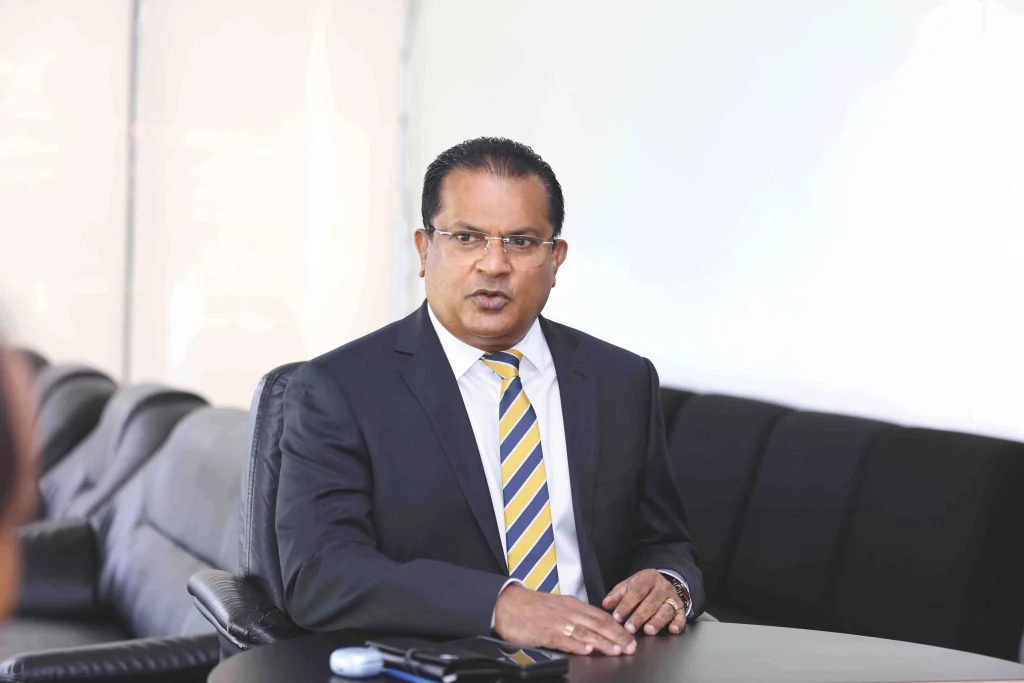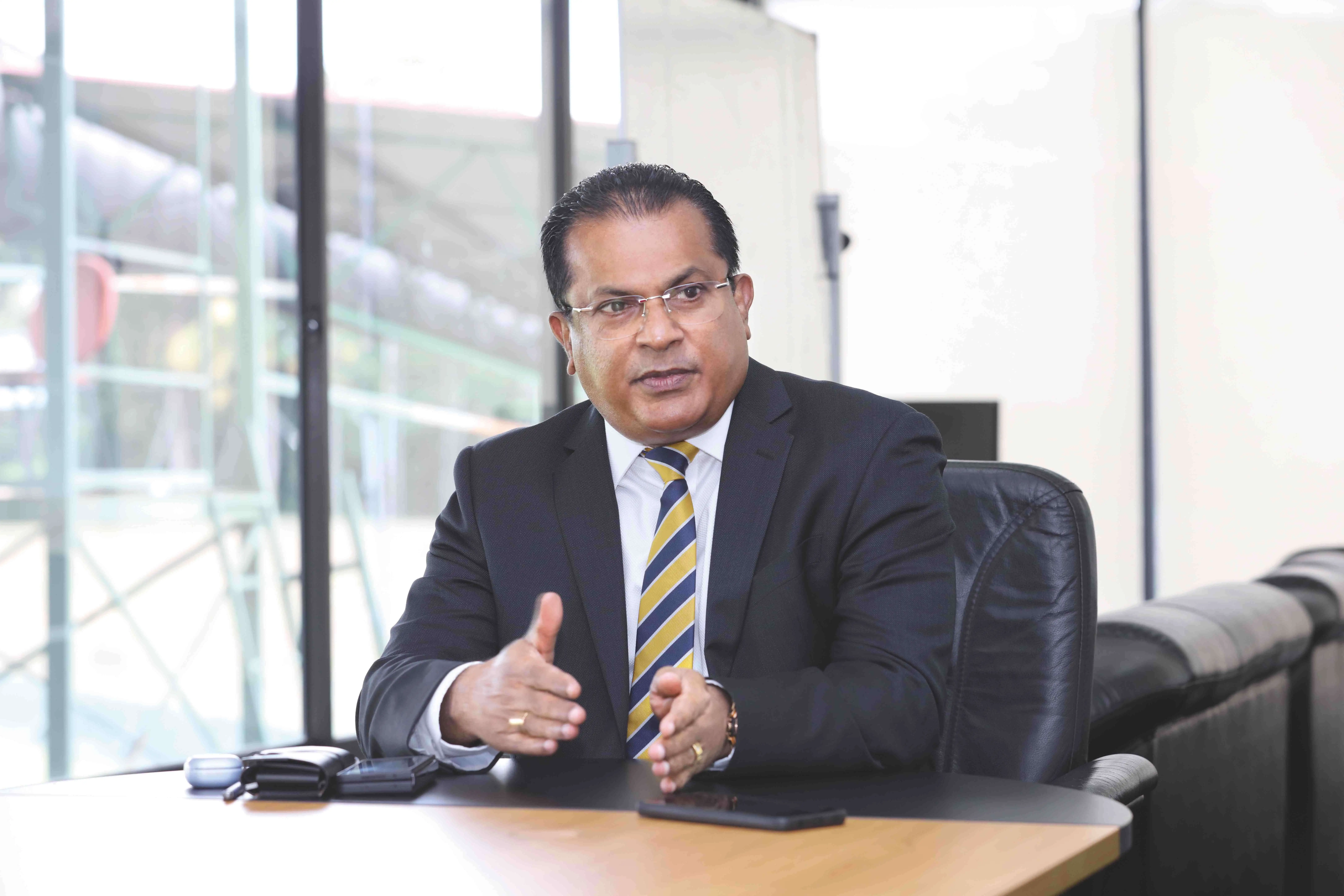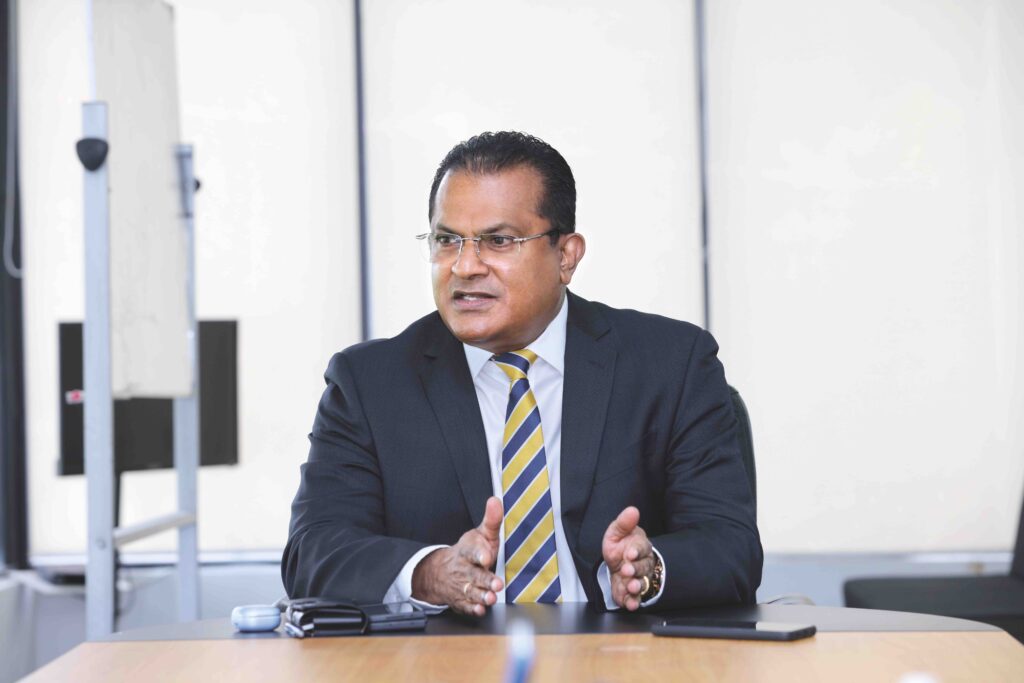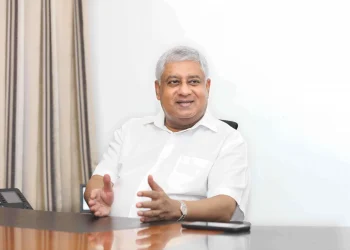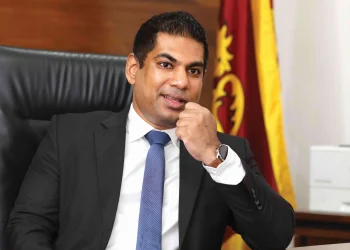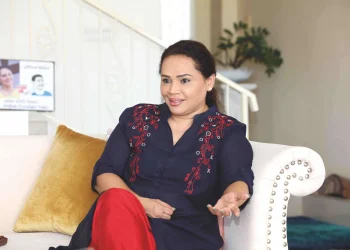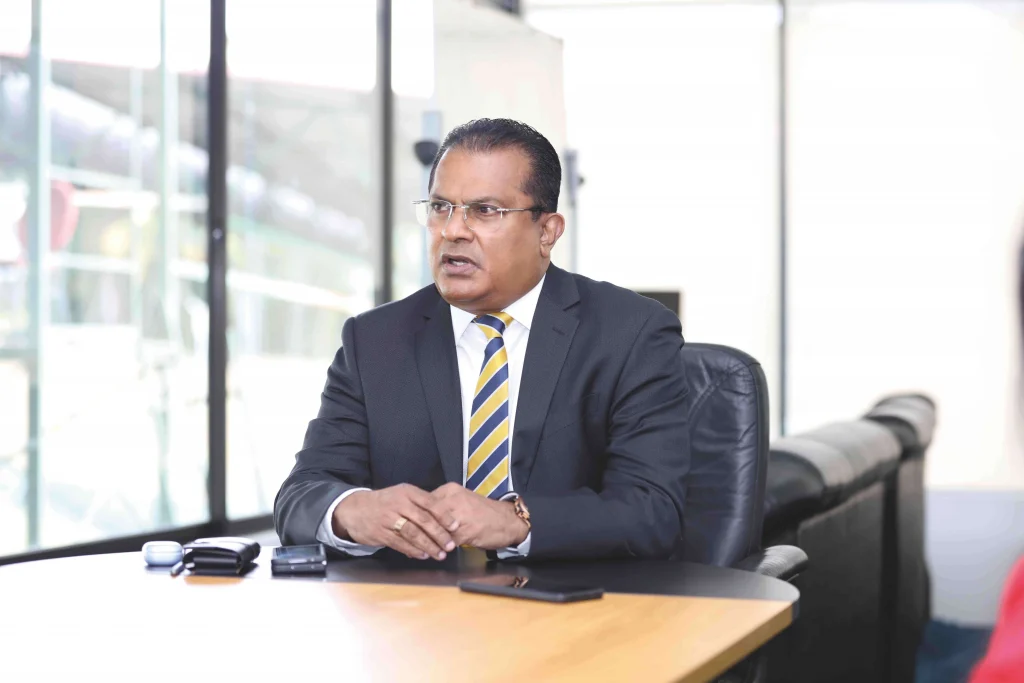
The run-up to the Asia Cup victory was a long and hard road. Leaving behind a trail of unsavory performances, the Sri Lanka National Cricket Team shut down the critics while vindicating the Sri Lanka Cricket administration. The strategy to field a new and young team paid off resoundingly. Speaking with Business Today, Shammi Silva, President of Sri Lanka Cricket, revealed the gamut of work that uplifted the entire sport. With a revamped coaching setup consisting of world-class trainers augmented by the input of former Sri Lankan players, spurred by their love for the sport and without any payback put in their weight behind SLC, the National Team rose from the ashes. Today Sri Lanka Cricket is in good hands, efficiently run by an administration that has multiplied its income and resources, making it one of the most valuable sporting bodies in Sri Lanka. That, combined with investments in cricket infrastructure development at all levels of the sport and nurturing new talent throughout the country, is auguring well for the future of the sport as the National Team preps itself for a stupendous performance in the World Cup.
Words: Jennifer Paldano Goonewardane.
Photography: Sujith Heenatigala and Dinesh Fernando.
Not long ago, amid a spate of match losses, many lamented how cricket was being played. Many cited a lack of talent spotting, recruitment, training, leadership skills, teambuilding, psychology and counseling, strategy, health and fitness, and medical services. One year later, how did you manage to change the trajectory?
It was all down to rigorous planning and a combination of consultations and collaborations that helped us emerge victorious. SLC met with several senior cricketers like Mahela Jayewardene, Muralitharan, Kumar Sangakkara, and Aravinda de Silva to improvise the game while simultaneously investing in a significant number of aspects of the game. Our new thrust to revive the game’s fortunes through consultation and investment in cricket development created the turnaround we saw when the Team clinched the Asia Cup recently. The secret behind the victory is the concerted planning, recruitment, and selection of players for the national teams.
I’m confident that the National Team will continue its winning streak.Their confidence is at an all-time high. Of course, now that we have a winning team, every action will be well scrutinized by opponents to strike back.
What do you think was lacking earlier?
We appointed a technical committee to study the setbacks experienced by the National Team. Based on their recommendations, we worked on building a winning team. It took time to bring the National Team to where it is today. It’s ironic that at one point, critics were lamenting the lack of players to fill positions in the National Team, but today we have a surfeit waiting in the wings to play in any of the places and batting orders in the Team. The change occurred with the recruitment of world-class cricket coaches. The game-changing trajectory commenced as we embarked on selecting and recruiting the best Team to steer the National Team into a future-ready and winning outfit.
The selectors have been doing a good job coordinating with members of the technical committee and consulting senior cricketers, helping our Team improve their play.
How did you unite the factions within the cricketing fraternity, including navigating a complex relationship with the Ministry of Sports?
Cricketers like Mahela Jayawardena, Kumar Sangakkara, Aravinda de Silva, and Muralitharan are legends of the game. While they didn’t get involved in the work of Sri Lanka Cricket, we intimated to them the reality as they, too, had a negative picture of SLC, assuming that we weren’t doing anything worthwhile to address the mess that the National Team was in.
As they learned how much we have done to develop cricket and the teams, those senior players voluntarily chipped in with their expertise, and their input has helped in our journey thus far. Today, Mahela Jayewardene has joined SLC as a consultant. The change that has taken place in the teams is impressive, and the revamping of the entire apparatus and structure of the sport has brought about significant results, the Asia Cup being a good case in point.
SLC and our teams have worked with several sports ministers, none of whom have interfered or dictated terms to us on how to run our affairs. From Dayasiri Jayasekera, Harin Fernando to Namal Rajapaksa, they gave us the freedom and the space to function independently and were aware that we were doing our job well, and supported us in our efforts to develop the sport. They knew that we were doing our utmost.
The problem we had for a while was dealing with an aging team that required replacing. Most people thought we didn’t have a second team to fill vacancies created in the National Team of aging players. It was a chance that the selectors took to replace the seasoned players with a younger group which paid off in the end.
But before this, even when there was a need for a replacement, you had no players. How did you and your committee manage to change the setup?
We began working on young players by solidly focusing on improving their performances, especially among the under-19 and under-21 teams, from which most make up today’s National Team.
In addition, we increased our focus and investment in improving club-level cricket to identify the future potential for the national teams. We have expanded our financial allocation to the cricket clubs.
However, the radical shift occurred when the entire team, consisting of the executive committee members and selectors, collaborated to develop the peripheral teams to create second-tier players waiting in the wings to fill slots in the national teams. That strategy, as you can see, has worked out well.
What are the concerns regarding the squad for the ICC Men’s T20 World Cup and the Team’s chances of sustaining their winning comeback at the forthcoming tournament?
Our leading fast bowler, Dushmantha Chameera, has recovered from his injury, although he had to miss the Asia Cup, and so has Lahiru Kumara. Kusal Janith, who had to miss out on the Asia Cup due to injury, is likely to stay away from the ICC Men’s World Cup. Avishka Fernando, who has recovered from an injury, cannot find a place on the National Team because we have enough replacements now in the event of a player injury. Significantly, Sri Lanka clinched the Asia Cup without those players.
How about finding new talent from the regions?
We have an excellent network of cricket-playing clubs, which I would say is only second to India. Following technical committee recommendations, SLC introduced T20 league tournaments consisting of teams selected from the clubs. We are also promoting league matches at the provincial level. Introducing league matches has provided an enormous fillip to our task of identifying new talent from the provinces. Many of the current players in the National Team, who are pretty young, were picked following their performances in the T20 league matches.
Notably, we played league matches amid COVID-19 restrictions and lockdowns. We successfully concluded two editions of the Lanka Premier League and will play the third edition in December 2022. Because we took the bold step of playing in the LPL amid the pandemic, today, we have a surfeit of talented young players to choose from. In the past three years, many players have made it into the National Team through participation in league tournaments. Earlier, resting an injured player until his recovery was a massive blow to the Team’s performance. However, today we have created a talent pool that has created a competition to get into the National Team, which is good for the sport.
What, in your opinion, made a winning team this time as skipper Dhasun Shanaka described the Asia Cup victory as a turnaround for Sri Lanka cricket ahead of the T20 World Cup?
We knew the standard of our players, although many had doubts. Their initial loss to Afghanistan at the Asia Cup was a shock. However, the Team’s recovery following their initial defeat was swift and impressive, winning five consecutive matches against Pakistan, India, Bangladesh, and Afghanistan. Sri Lanka successfully beat all these world-class teams because they had a balanced side. Before the Asia Cup, the Sri Lankan Team had performed impressively in Australia, losing some matches by a narrow margin, while bad umpiring also cost us victory.
I’m confident that the National Team will continue its winning streak. Their confidence is at an all-time high. Of course, now that we have a winning team, every action will be well scrutinized by opponents to strike back. India has the best technology in this regard, yet we beat them at the Asia Cup. Although we were considered the underdogs in the run-up to the Asia Cup, we witnessed how the game changed on the field. The upcoming ICC Men’s World Cup will be an exciting event.
Can you tell us the discipline that you introduced to the Team?
We maintained strict rules on discipline and fitness, which is why we imposed a ban on three players who violated the rules. Our action brought a positive change in player behavior, and today the entire Team, including the three players who were banned and are back on the Team, are performing well.
How much is the Brain Centre being used to improve performance?
Former SLC president Thilanga Sumathipala established the Brain Centre. Coaches and cricketers at all levels of the sport make use of the technology at the Brain Centre to study batting, bowling, and fielding movements and injuries to correct errors, which helps coaches to determine the fault and guide the players to overcome those rough areas. The Brain Centre is augmenting our Team’s performance a lot. We will open a new Brain Centre at the Kettarama International Cricket Stadium.
How strong is SLC’s relationship with the Sri Lanka Schools Cricket Association to identify and nurture future talent?
SLC has increased its annual spending on promoting schools’ cricket from 50 million rupees to 250 million to 300 million rupees. We did have issues with the schools’ cricket management, but that’s all resolved now. That, in turn, has seen the association working robustly to produce more cricketing talent from the schools.
SLC is investing a lot in developing cricket infrastructure in schools by providing equipment to maintain school grounds and the standard of the sport. SLC provides every possible facility to cricket-playing schools to nurture young talent who would one day make it to the National Team. By taking over the development aspect of schools’ cricket, the SLC has eased the burden on the government to spend on developing cricket in schools.
As a cricket-playing nation, we must invest more in new grounds of international standards. Investment in infrastructure is vital for sports development.
SLC has been promoting women’s cricket, sending a National Team to qualify for the ICC Women’s Cricket World Cup in 2021. What are SLC’s plans to promote women’s cricket?
We’ve made significant changes to women’s cricket by investing more robustly in developing the sport. We witness tremendous enthusiasm among women to play cricket when the national women’s Team plays well and receives the visibility they deserve.
To augment women’s cricket at a national level, we’re hoping to initiate “big matches” among the girls’ schools in the urban areas, especially in Colombo. We are speaking to the heads of some schools to start big matches that would spur greater enthusiasm among women and the public. After all, cricket is the most loved sport in the country, and with the Asia Cup victory, the excitement for the sport is at an all-time high, allowing us to push women’s cricket to the forefront. The public will see tremendous changes in women’s cricket in the next two years.
What are some of the areas in cricket that need to change for the good of the sport?
SLC is in a very stable position financially. We’re financially more robust than many other cricketing bodies in the world. As a cricket-playing nation, we must invest more in new grounds of international standards. Investment in infrastructure is vital for sports development. However, there are instances when outside meddling thwarted our efforts. Sri Lanka is selected to co-host the 2023 ICC Men’s Cricket World Cup with India. We initially bid for exclusive hosting rights alone. However, since we could not fulfill the criteria of five cricket playing grounds, we were compelled to be a co-host for an important international tournament.
Sri Lanka has only four international standard grounds: Kettarama, Pallekele, Dambulla, and Sooriyawewa. Since ICC’s requirement to host the World Cup was five grounds, we planned to build a new one in Diyagama as it was the most centralized location with all the highway connectivity. However, our SLC decision was overturned by political authorities, and we couldn’t proceed with the project. As a result, we lost the sole right to host the 2023 World Cup, which we have to share with India. Had we invested in the Diyagama ground three years ago, the work would have been done by now and ready with five international grounds to host the ICC Men’s World Cup in 2023. It was a very sad situation indeed. Due to political interference, SLC lost the opportunity of a colossal financial gain and added a magnificent modern stadium to our asset portfolio. Sadly, the country lost its pride, honor, and national feeling apart from the direct and indirect mammoth income from tourists.
Do you mean to say that the sport still confronts political interference?
Of course, there is political interference. SLC has to grapple with political interference like no other cricket-playing nation in the world. Cricket administrations in India and other countries enjoy the freedom to function as independent entities. In 2020, in a landmark judgment concerning a case that went before the Supreme Court of India, the five-judge Bench held that the BCCI was an autonomous body discharging duties such as selecting an Indian cricket team, controlling the activities of the players and others involved in the game of cricket. Therefore, it could not be brought under the ambit of “other authorities.” Sri Lanka Cricket receives funding from the ICC and doesn’t take a single cent from the State. Like the BCCI, we’re a fully autonomous institution in charge of cricket in Sri Lanka. However, SLC continues to experience outside interference, which is hindering its progress. While executive committee members serve voluntarily and work tirelessly to improve SLC’s financial position, filling its coffers with 40 million US$, we still have to be permitted by the ministry to travel abroad to watch a cricket match. While the money belongs to the SLC, we have to have the permission of the ministry to use our funds.
The SLC funds don’t belong to the State. While we’re an independent body, they took us to COPE. However, we’re not answerable to COPE because we’re not spending State money. Right now, elements are attempting to destroy SLC’s independence. Recently, some individuals consulted the Attorney General in a bid to take over the SLC, but the AG pointed out its illegality. If they were to do so, the ICC would suspend Sri Lanka as it did Zimbabwe years ago. When given an opportunity, specific individuals are daggers drawn to disturb the smooth functioning of SLC.
What sort of vested interest do they have in scuttling the work of SLC?
SLC has 40 million US$ in its coffers. SLC is the only autonomous sporting entity in Sri Lanka making money. Therein lies the problem where certain elements want to come in to dip their hand into the coffers. All they’ll do is destroy the money we’ve made through sheer hard work.
Sri Lanka Cricket received 20.5 million US$ from the ICC when it hosted the ICC Men’s World Cup in 2011. Following the tournament, SLC went bankrupt to the extent that it couldn’t even pay the players and staff, loaning the money from the ICC. Today, the same individuals are trying to make a comeback to SLC. The several interim committees we’ve had in the past were politically motivated moves schemed by those individuals. They are using their political clout to meddle in our affairs, appoint another interim committee if possible and spend all the money we’ve earned. Everyone’s interested in getting into SLC because of the money.
The Asia Cup victory was one of the best things that happened to Sri Lanka. Thanks to the tournament, Sri Lanka received free tourism promotion worth more than five million US$.
How will all this impact the game and the players’ performance, especially their morale?
Such maneuverings are impacting player morale in a big way. An excellent example of political meddling happened during the Asia Cup when chief selector Pramodya Wickramasinghe was not permitted to travel to Dubai to help the Team when they lost to Afghanistan. Nonetheless, he traveled to Dubai on his account as the sports ministry issued a letter instructing him to find the money for his travel. That was blatant political interference.
With such rich largess in funds, how can SLC remain autonomous?
We are trying our best to remain independent for the game’s future. After all, we have no political agenda. Neither do we have an affiliation to any political party. Our association is cricket. As this is not a government-controlled sports body, appointments to SLC are apolitical and based on voting.
Isn’t it like tightrope walking, balancing the challenge of outside interference while developing the sport?
It’s a huge challenge. SLC is yet to become a fully-autonomous sports body like in other cricket-playing nations where they work independently from the government. In Sri Lanka, we have to manage many dynamics and elements while ensuring our focus and primary business, cricket, gets its due place.
Is corruption a concern in all of this?
SLC may be the only sports body to go bankrupt after hosting the 2011 World Cup. The corruption that led to bankruptcy remains a mystery with the obliteration of any available evidence. All the CDs containing evidence disappeared, making it difficult to hold individuals to account. It’s the same individuals today trying to enter SLC by slinging mud at those serving dedicatedly. I can assure you that there’s no room for corruption in SLC. Somasundaram, Jayawickrama, and KPMG meticulously audit our accounts before being scrutinized by the Auditor General’s Department. SLC is an entity worth 10 billion rupees. We don’t need approval from outside to make purchases as long as we have the executive committee’s approval because we’re an independent sports body. However, many outside elements are trying to interfere with the operations. They will make false corruption allegations without evidence to make way for their entry.
How did you navigate the chaos of shifting the Asia Cup from Sri Lanka to Dubai?
Our close relationship with Mr. Jay Shah, the President of the Asian Cricket Council, helped us shift the Asia Cup from Sri Lanka to Dubai. Mr. Jay Shah graciously postponed the Asia Cup four times, hoping the situation in Sri Lanka would improve. Although we assured them that Sri Lanka could host the tournament, there were many issues, such as the TV partner Star Sports reporters’ failure to obtain insurance cover to travel to Sri Lanka. At the same time, they were concerned about the teams’ safety. By then, the people had stormed into the President’s House, the Presidential Secretariat, the Prime Minister’s Office, and even set fire to the then Prime Minister’s private residence. The question was, what was there to prevent people from storming the hotels where the players would be staying? Our assurances weren’t enough out of the 14 ACC committee members, except for Sri Lanka; all the others collectively disagreed on conducting the tournaments in Sri Lanka. Moreover, many top players in the foreign teams were refusing to travel to Sri Lanka. The ACC would have given us 2.5 million US$ had we hosted the Asia Cup in Sri Lanka, but we ended up getting four million US$ because of the shift to Dubai. Had we played in Sri Lanka, we would have managed only two matches as the rain had set in by then.
How did you feel handing the champions’ trophy to the Sri Lankan captain when the country was at one of its lowest points?
The Asia Cup victory was one of the best things that happened to Sri Lanka. Thanks to the tournament, Sri Lanka received free tourism promotion worth more than five million US$. The majority are unaware of some of the benefits Sri Lanka got through the Asia Cup tournament. They displayed the “Visit Sri Lanka” tagline while playing the India and Pakistan national anthems before a game. We are sure that at least 800 million people in India were watching that match alone. While I was delighted to hand over the champions’ trophy to our captain, I was equally delighted that the victory was a victory for the whole of Sri Lanka. It was good for Sri Lanka when we were going through so much as a people.
Did the Sri Lankan cricket team feel the pressure to win as the national women’s netball team had clinched the Asian championship on the same day?
Sri Lanka had a double victory in one day, with our national women’s netball team clinching the Asian championship. I don’t think the Sri Lankan cricket team felt the pressure to win because of the women’s victory. They were relaxed. We were under pressure when we lost the toss. Many thought we had lost the match. Only three games out of 53 played at the tournament had been won by teams who had lost the toss. We were a little down when we were 58 for five wickets, but the game of cricket is such that everything turned around, and our players proved their talents and displayed the excellent grooming they had received through world-class training. The head coach Chris Silverwood led the coaching team and contributed immensely to our victory at the Asia Cup. The entire gamut of the game, from batting, bowling, and fielding, had reached a finesse that was demonstrated magnificently on the field that day.
Since the victory, Sri Lanka Cricket has rewarded the national netball team for clinching the Asian championship. What is the objective of doing so?
SLC rewarded 18 national women’s netball players with two million rupees each. The government or the sports bodies representing other sports in Sri Lanka lack the resources to reward performers. All eyes are on SLC as a sports body with resources. As a past sportsperson, it would be a shame to witness the decline of sports in Sri Lanka. We want other sports to develop as well as cricket. The members of the executive committee and I discussed the importance of helping individuals excel in other sports. We intend to speak with the sports minister to provide financial assistance to selected sports bodies so that they can recruit good coaches to develop the game. As it is, some sports bodies cannot pay their coaches, which could decline the game. Our assistance extends to charitable projects as well. SLC donated 1.5 million US$ to the Apeksha Hospital and one million US$ to the Lady Ridgeway Hospital. We also gave the sports ministry 100 million rupees to carry out its activities. I believe that such outreach could help us in return. For instance, women netball players can replace our women’s cricket team members anytime. The objective of helping develop other sports is also to develop potential cricketers in other sports. We need athletes who can perform in any game, given the space to train appropriately.
Amid all the challenges you’ve spoken of, what’s your hope for the future as a sports body?
When we took over SLC, we didn’t have enough finances to develop the sport as we are today. We worked according to a plan and earned money. We plan to make more money for SLC, which should be retained for the future while at the same time investing in improving the game. Even amid the pandemic, Sri Lanka was the only country that played cricket, for which I’m grateful to former sports minister Namal Rajapaksa, who supported our decision amid the restrictions. Others followed our lead. Although we were not consistent in our performance, SLC solicited sponsors because we have the potential to play international-level cricket, which draws a substantial audience. Being close to India, we receive tremendous support from the BCCI, the sport’s giants. We have 100 percent backing from India at all times. That has sustained our success and has been a strength for my committee and me. We are closest in our relationship to the BCCI than any other country. We have a lot to gain from our relationship with India. A single match from them helps SLC earn three million US$. There is competition in that regard, and the other cricket-playing countries are also inviting India to play on their soil because of the immense payback it brings.
